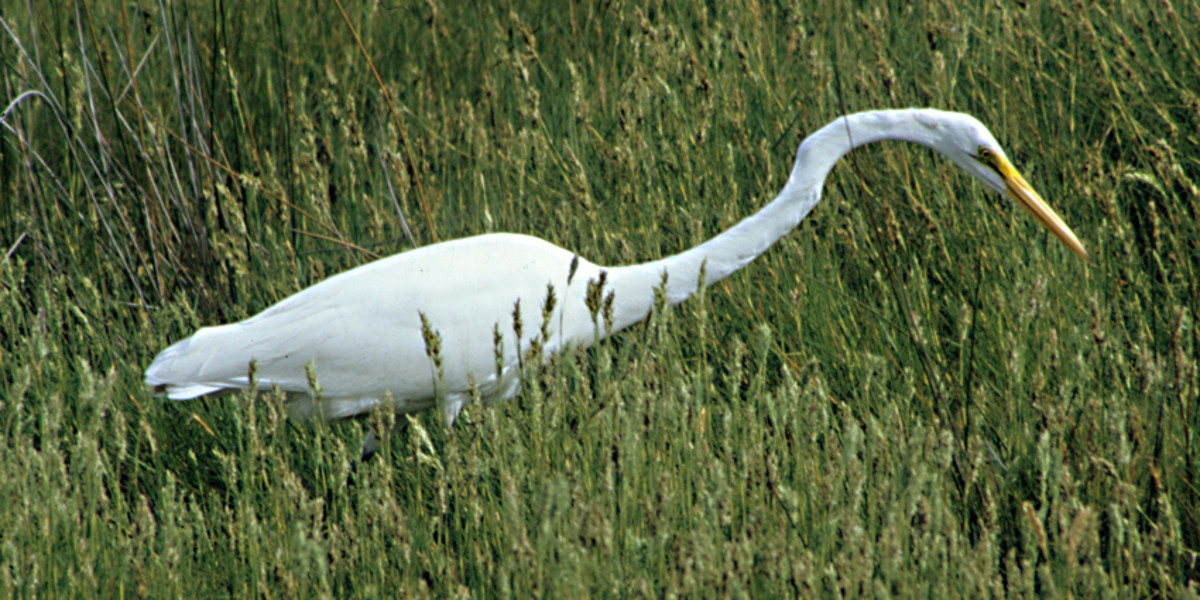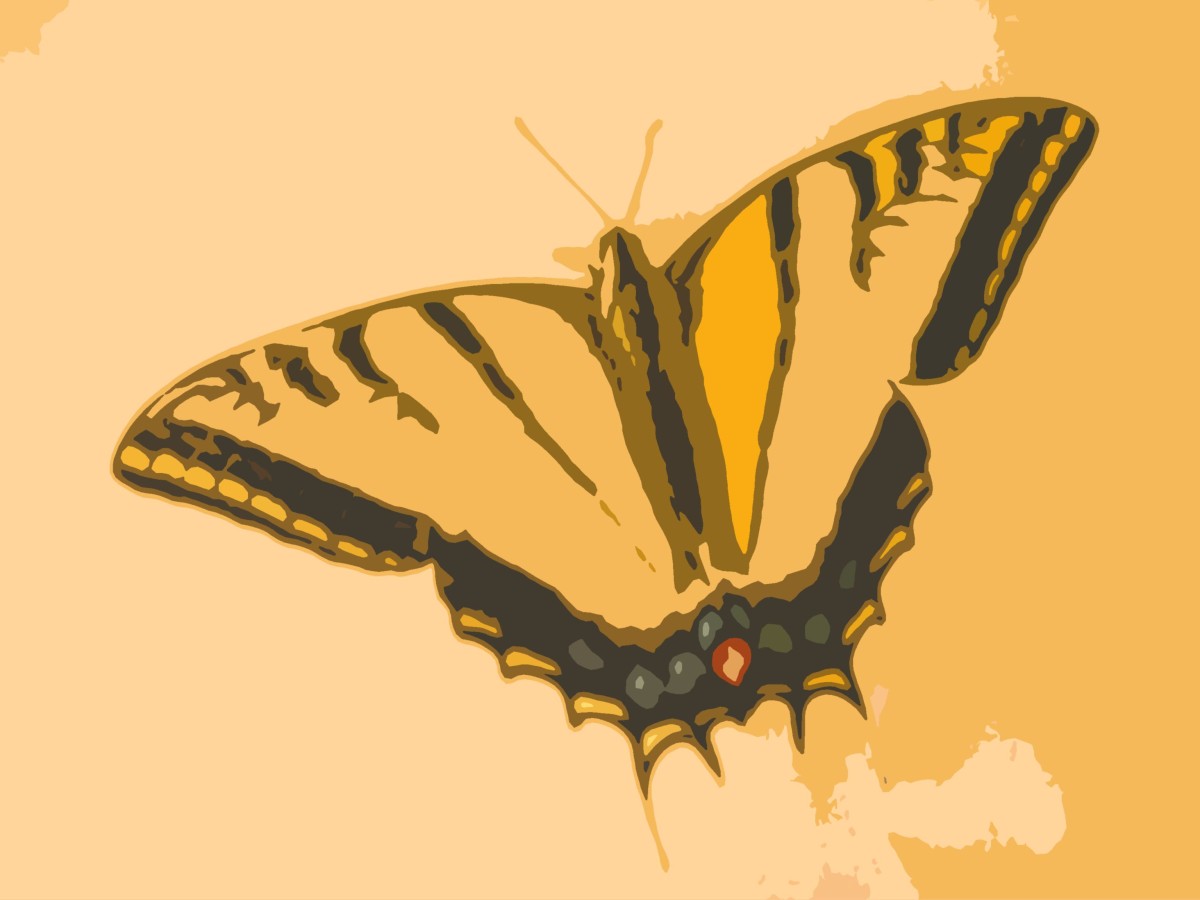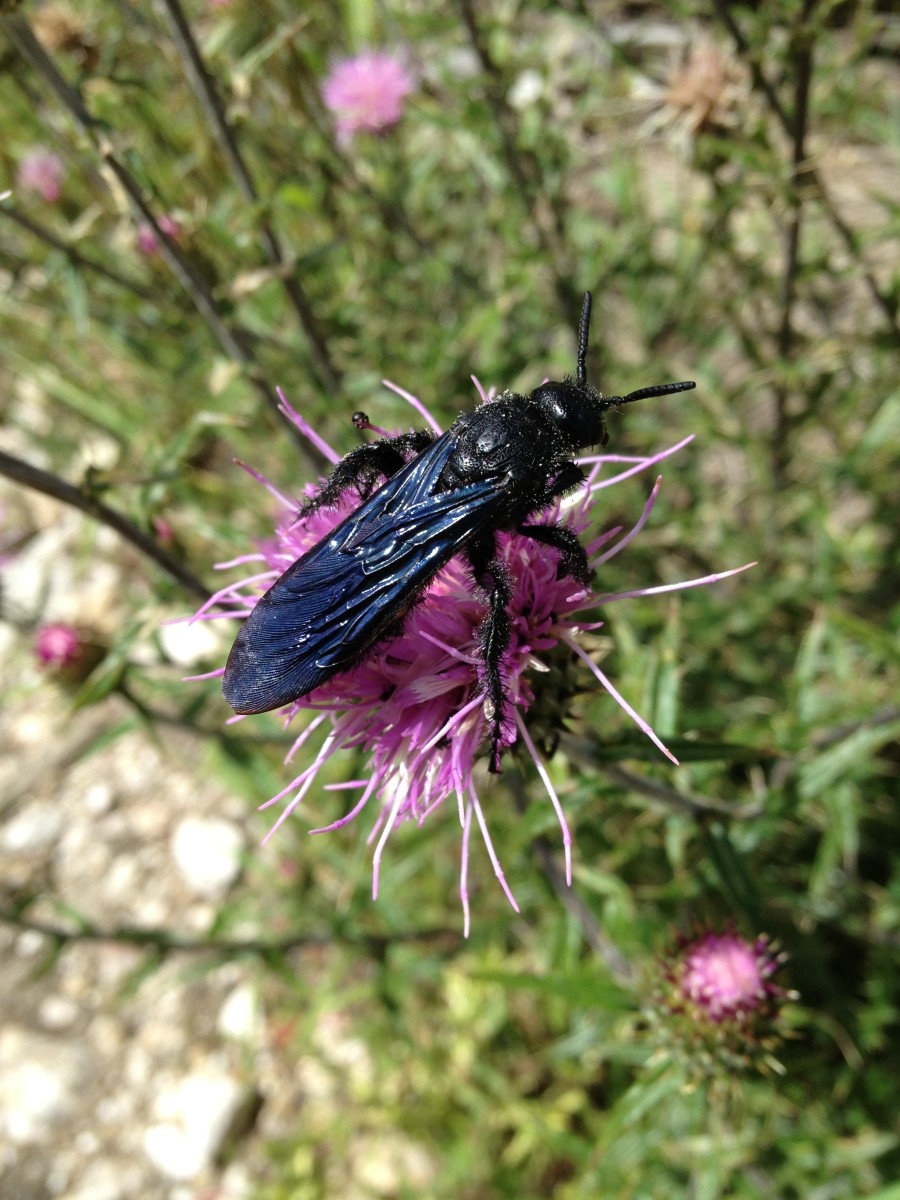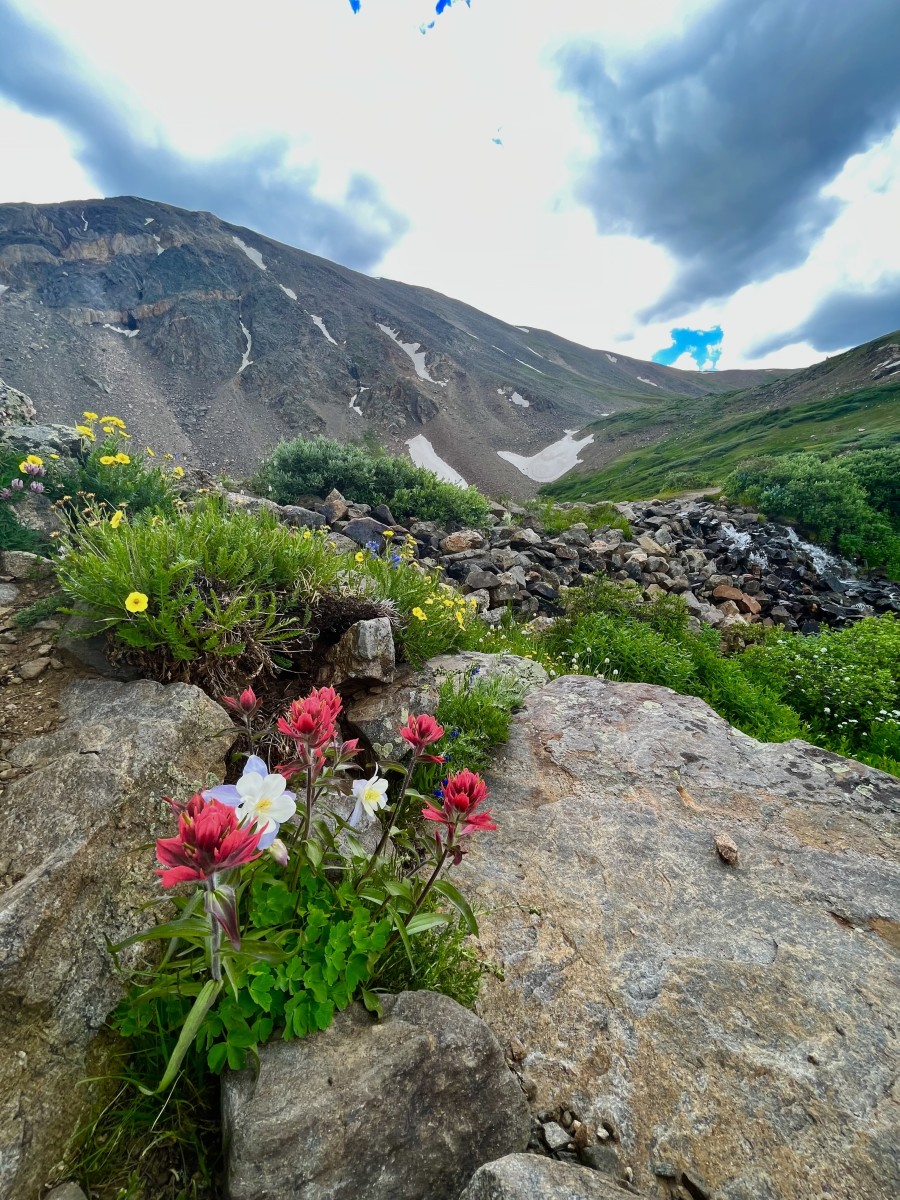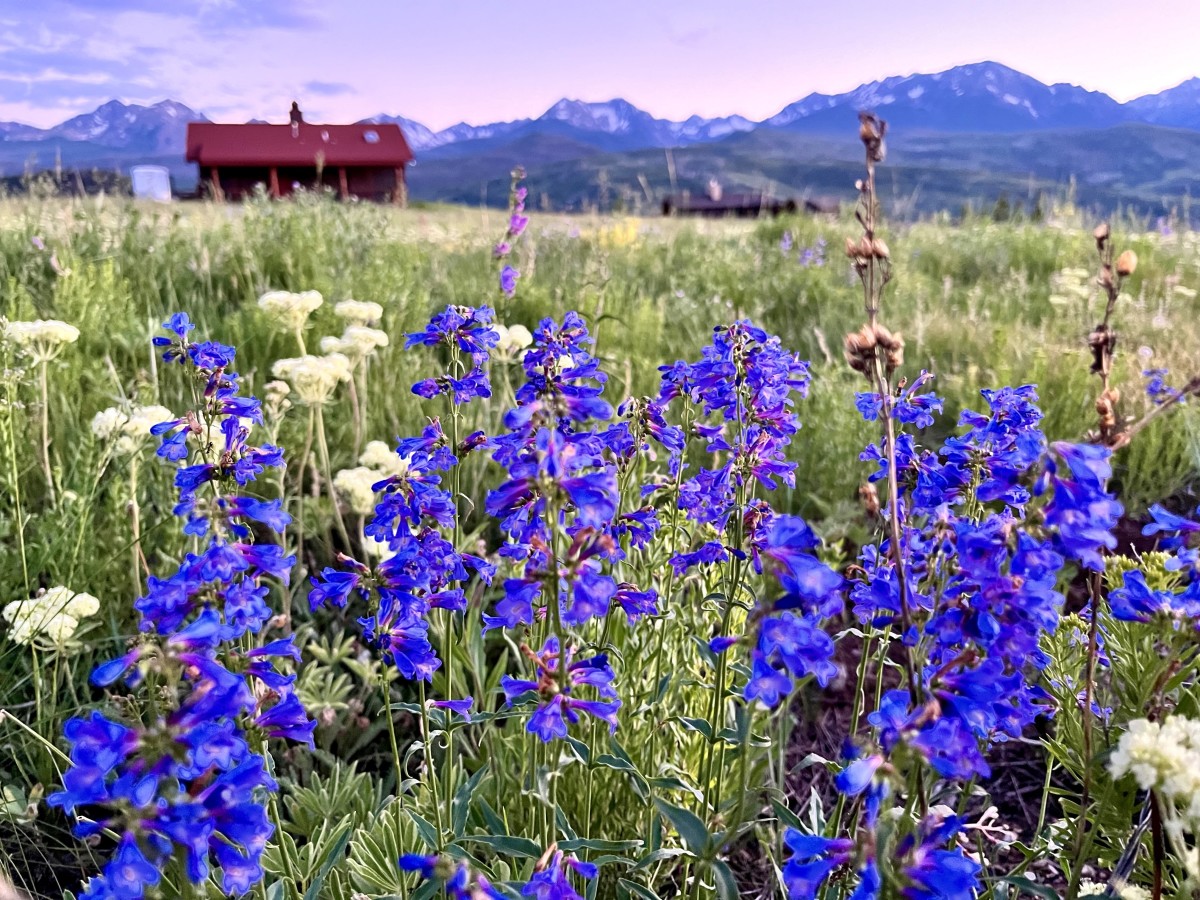Flying Flowers
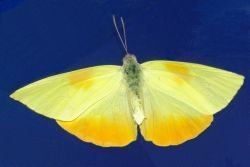
And Flowers That Do Not Fly
I am concentrating on yellow things found in nature: butterflies, birds, and wildflowers. There are yellow flowers, and then there are yellow flying flowers. Both birds and butterflies are flying flowers. Let a little sunshine into your day! Read on...
Wait. The sun, though popularly thought of as yellow, is really white. The visible spectrum from the sun is quite complete.
As for butterflies, even though I have found it a rare experience that a yellow butterfly is willing to settle down long enough for me to get a picture, and butterflies come in lots of different colors, I have a theory. Why are they called "butterflies" in the first place? Because they're the color of butter! Right? :)
All pictures are mine, and all taken in the wild except for some of the butterfly pictures and one bird picture. The photo on the left is an Orange-barred Sulphur, Phoebis philea.
Brittlebush - Encelia farinosa
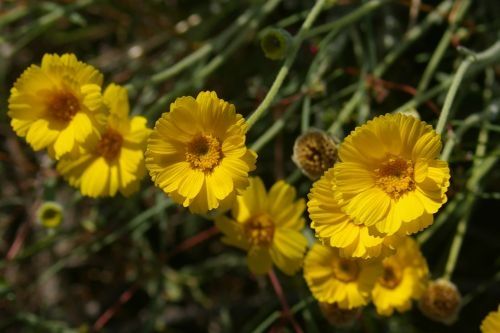
This is probably the most appropriate yellow thing to start our journey. It is the most abundant yellow flower in southern Arizona, at least in my experience. It is called Brittlebush because the stems break off cleanly and easily.
Many yellow flowers in Arizona follow the typical pattern of ray and cone flowers, such as this one does. They are often difficult to distinguish, and I would much rather try to figure out the species of something else. I also much prefer purple flowers, or hot pink flowers, for landscapes especially, but they just don't show up like the yellow flowers do. If you have a field of yellow flowers, they really sock it to the eye.
We have lots of this in the mountains where I live, so I often see this wildflower on my property. It is a perennial, and looks quite dead during dry seasons.
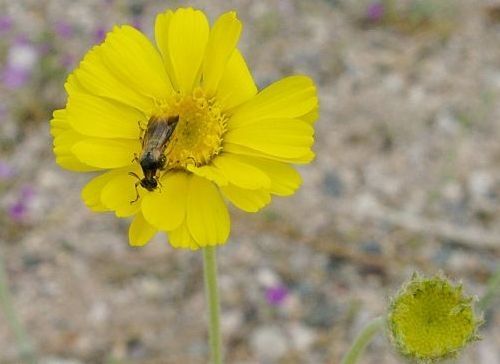
Here is a Brittlebush flower with a visitor. I don't know the name of the insect. We haven't been introduced. My guess is it's a native bee. There are a number of species of these.
Brittlebush in the Superstition Mountains
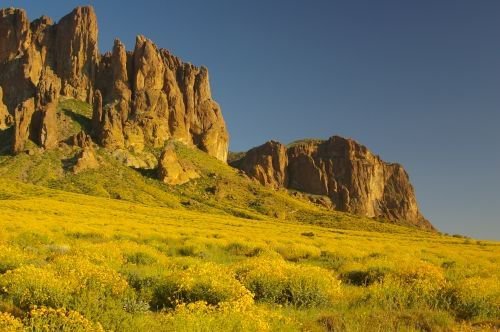
This is what happens when you get a field full of these bushes in flower, in the spring. West of Phoenix, Arizona.
Painted Lady on Brittlebush - Vanessa cardui
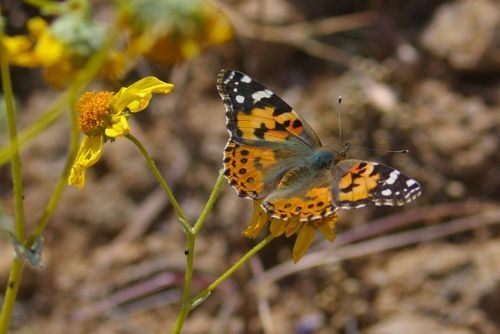
I found this beautiful (and very common) butterfly within walking distance of my home. The flower is yellow, of course, but the butterfly is not, equally obviously. That's OK. Orange and brown go well with yellow.
Dogface - Zerene eurydice
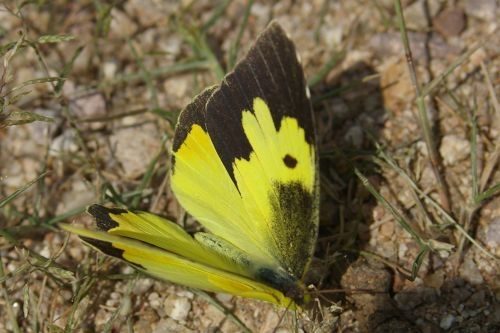
This butterfly with the brilliant yellow area is called Dogface because the yellow shape looks a little like the face of a dog (well, in some people's opinions, but not mine). These butterflies are also fairly common, but not as common as the Painted Lady.
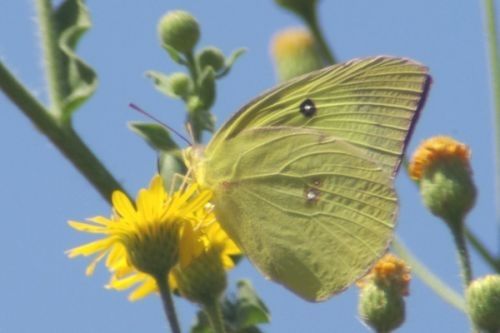
A view of the underside. I think I found this one in Catalina State Park, southern Arizona. It comes with its own yellow flower.
Blue Palo Verde - Parkinsonia florida
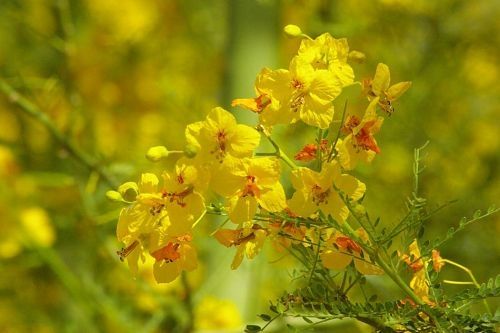
This tree blooms after the wildflowers are mostly spent. It is a marvelous design that the flowers don't all bloom at once. There is food for bee and butterfly through many months.
The Palo Verde is characterized by the fact the bark on branches and trunk is green. It has chlorophyll and engages in photosynthesis even when there are no leaves. "Palo Verde" is Spanish for "green trunk".
Some Palo Verdes have flowers with a single white petal. That is the kind we have on our property. The ones with the single orange petal, such as this one, don't grow near me. I found this one at Gilbert Water Ranch east of Phoenix, Arizona.
When the beans are still green, they are delicious to eat, but a pain in the neck to harvest because each one must be peeled out separately. They taste a little like garden peas, but they're sweeter. Once they turn brown, they are impossibly hard. A seed won't even germinate until a bird has eaten one and scraped it with the stones in his gizzard.
I have eaten the flowers. Of course to make a meal, you'd have to gather quite a few. The taste isn't too bad. It's mostly pretty bland.
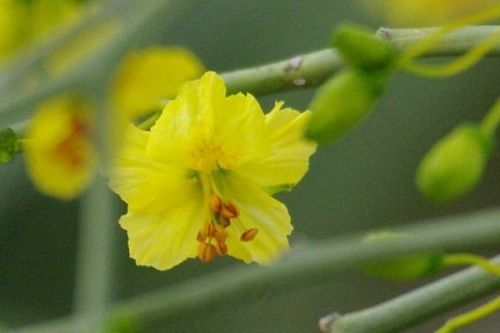
Here is a closeup of a Palo Verde flower.
Yellow-rumped Warbler - Dendroica coronata
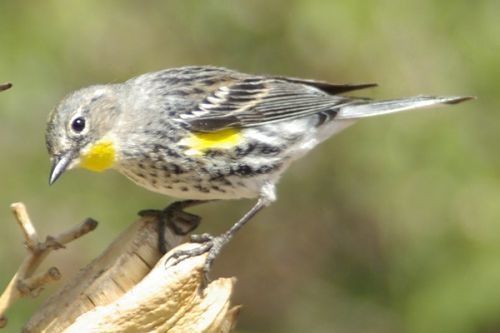
Pure yellow birds are not so easy to find in the wild around here. We have Yellow Warblers. They're pure yellow, but they're also very shy. They like to hide out in the middle of bushes. I haven't taken many pictures of them.
Quite a few birds have yellow on their bodies someplace, however, particularly warblers. These particular warblers are fairly common, mostly when the weather is a bit cooler. I found this one south of Fort Huachuca, Arizona. In addition to the yellow on the throat and under the wings, they have a yellow area between the wingtips on their backs. In other words, they have a yellow rump. :)
These warblers eat tiny insects. They see one, and fly up and catch it with that ridiculously small beak. Then they land again, usually on the same spot as before, and wait for another one. I don't see how they do it. It's amazing.
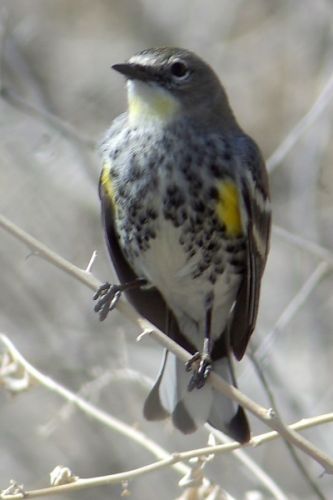
Here is another view. I wanted you to see the marvelous pattern of black feathers on this male's chest. This one was hanging out at Sweetwater Wetlands a couple of years ago.
Yellow-throated Warbler - Dendroica dominica
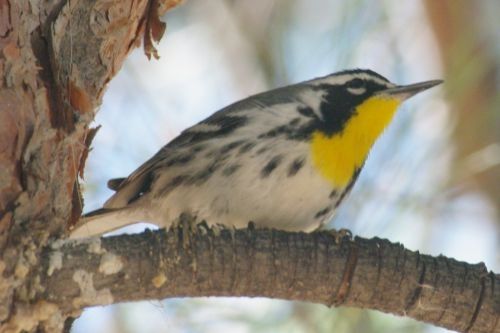
This bird spent a few weeks across the street from Sweetwater Wetlands. I think he's gorgeous.
At the time I was watching him, there was a small group of people with me, and one of them kept oohing and ahing as if he were in some kind of ecstasy. It was a little amusing, but not entirely, because I had been there probably five times to see this bird and he just plain wouldn't show up when I was there. In fact, one time, I was around the curve of the lake looking at a male Wood Duck, and someone I was with saw and photographed the bird, but by the time I got back to him, the bird had disappeared, and all I got was a look at the photo.
I felt like oohing and ahing, too, in a way, but I took pictures instead.
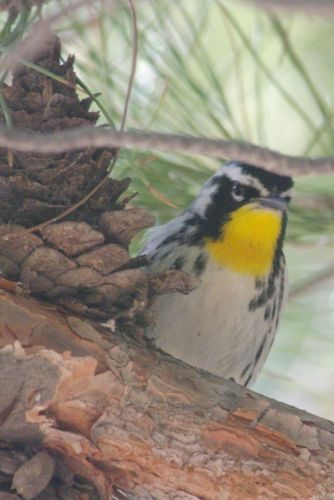
Another view. His yellow throat certainly stands out!
Giant Swallowtail on Yellow Flower - Papilio cresphonte
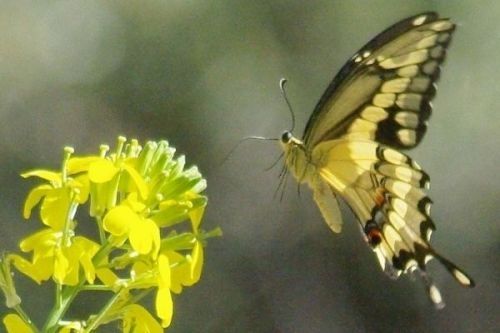
Once in awhile I get really lucky and get a mostly yellow butterfly on a yellow flower. This butterfly isn't exactly ON the flower, but is feeding from it in flight. He wasn't interested in landing. A flying butterfly is harder to capture. I don't know what the flower is. Someone told me, but I forgot. :(
Found in Tohono Chul Park. This is north of Tucson. The name means "desert corner" in the Tohono o'Odham language. (The name of the nation means "Desert People".)
Verdin - Auriparus flaviceps
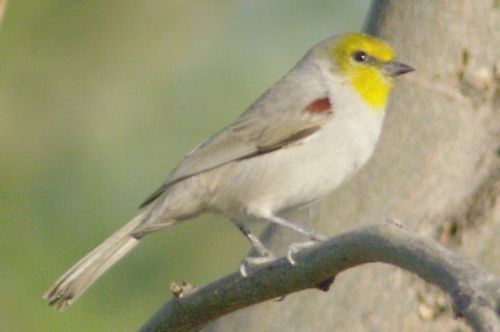
The Verdin is a fairly tiny bird, not too much larger than a hummingbird. They sound like certain species of hummingbirds when they vocalize, too.
The male has a yellow head, and the female has just a yellow face. The red spot on the wing shoulder is larger in the male. I always think of them having been wounded, because of the red spot.
These birds are quite active, so it's not easy to get a picture. But they're fairly common around here.
They build a nest that is humongous, practically like a large enclosed apartment. I often see the nests. They're fully enclosed except for the entrance. They're made mostly of small twigs and blades of grass and that sort of thing.
I saw this one somewhere in southern Arizona, but I don't remember exactly where.
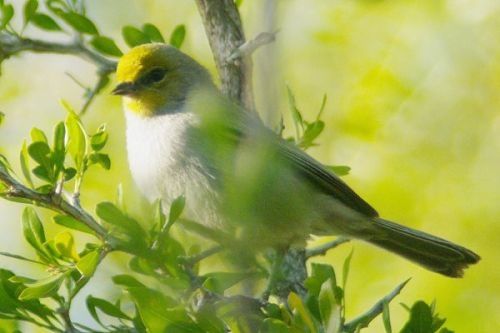
This Verdin was at Tohono Chul Park.
Debate
Tell us why you chose that side.
Do you like yellow?
California Poppy - Eschscholzia californica
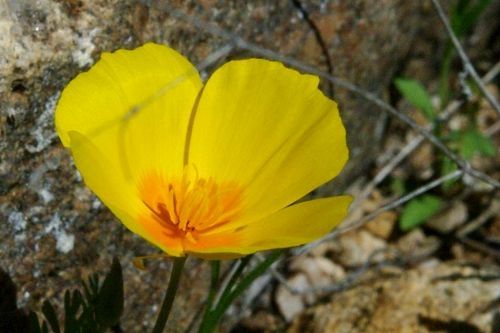
We get these flowers when we have had good winter rains. They can vary in color from deep orange to white.
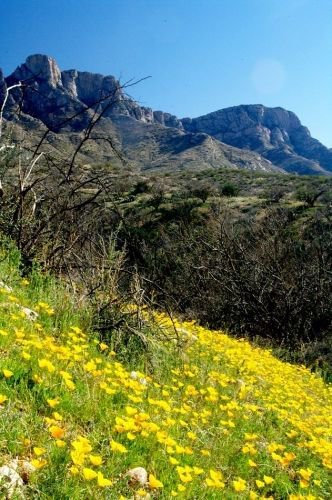
And this is what it looks like when you get a field full of them.
Both pictures were taken in Catalina State Park.
Yellow-eyed Junco - Junco phaenotus
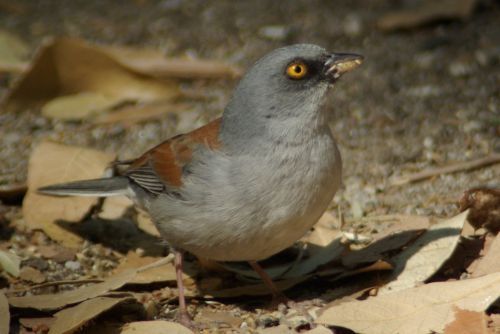
Some birds are just plain not lucky enough to have yellow on their bodies.
And I think the eye looks orange rather than yellow.
But what's in a name?
Found in Madera Canyon, Arizona.
Black-headed Grosbeak - Pleucticus melanocephalus
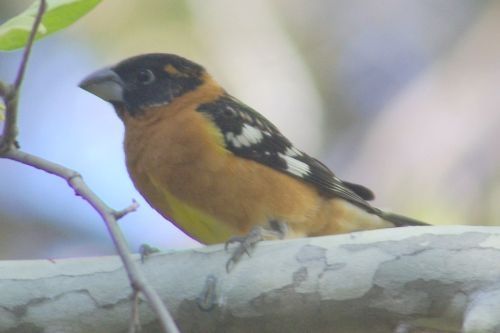
And some birds have a LITTLE more luck. This bird has a little yellow on his body.
I found him in Madera Canyon.
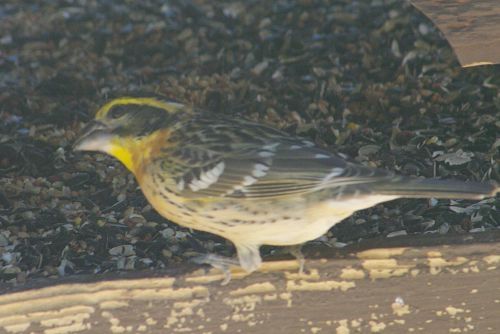
And this female has the yellow on her throat.
Common Leopard - Phalanta phalantha
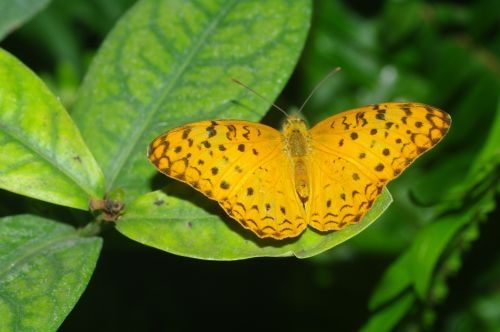
This lucky butterfly has brown decorations all over his yellow wings. He will be found in India and Australia. I found this one at the Tucson Botanical Gardens.
Velvet Mesquite - Prosopis velutina
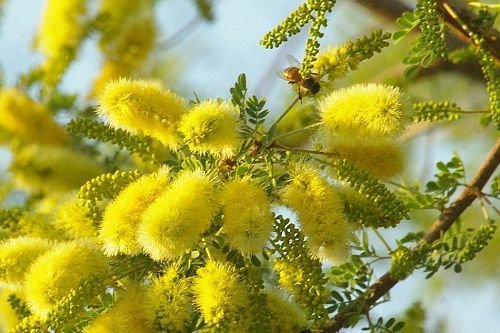
Take a look at these wonderful yellow catkins! And if you look more closely in the upper right, you will see a bee. Evidently he likes yellow, too.
Found at Tres Rios west of Phoenix.
This may not be as silly as it sounds. Studies have determined that insects see "different" colors from what we see, and evidently what looks like a yellow flower has a very inviting color to an insect looking for a meal.
White Tackstem - Calycoseris wrightii
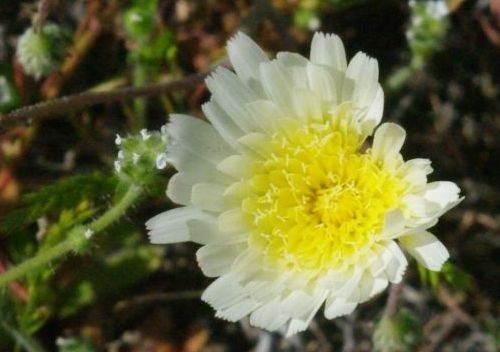
This flower was blessed with a center of delicious, butter-yellow.
Found in Catalina State Park.
It pays to go tramping around in weird places. You see all kinds of neat things.
Yellow-headed Blackbird - Xanthocephalus xanthocephalus

The head looks more orange in the late afternoon night. Other times, this bird's head looks more yellow.
These birds make a noise that sounds like a rusty gate hinge, to me. It's very distinctive.
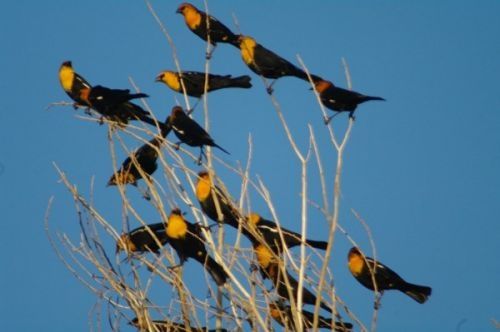
I found these birds in Sweetwater Wetlands. They always have a lot, in season. I have seen flocks of hundreds flying overhead. They quickly land in the reeds and disappear. At night, some of them like to roost in this favorite tree.
Prickly Pear - Opuntia engelmannii
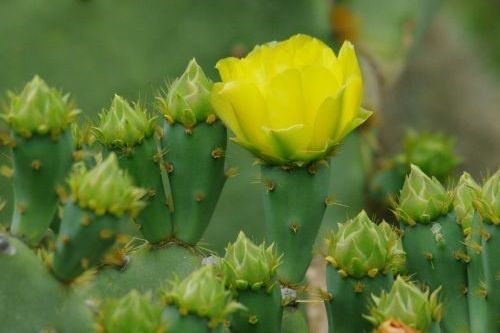
Most of the local prickly pears have yellow flowers, although peach, pink and other colors are a possibility. As you can see, this cactus is just getting warmed up. Look at all those buds!
Prickly pear fruit has a delicious juice I like to drink straight and raw. Other people make cactus jelly out of it. The very young pads can be boiled in three waters (slightly salty) and served in your favorite chili. They are called nopalitos, and you can also get jars of them in the grocery store here.
These flowers bloom even later than the palo verdes. Again, a good food supply for many months, and beauty as well.
Sleepy Orange - Abaeis nicippe
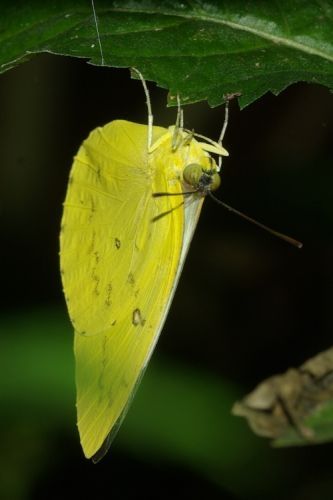
Yellow butterflies tend to be very active, and they keep their distance. I have been able to get a few good pictures, but not a huge collection.
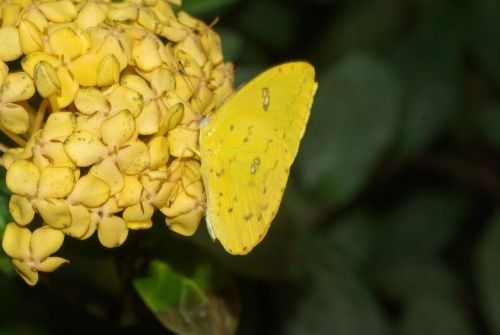
This time I got a yellow butterfly on a yellow flower! Same species as above.
The flower is Jungle Flame, Ixora coccinea.
This butterfly is widespread in the Americas, but the plant is from India and Sri Lanka. Only in an exhibit would you find these two together! Taken at the Tucson Botanical Gardens.
Flame-colored Tanager - Piranga bidentata
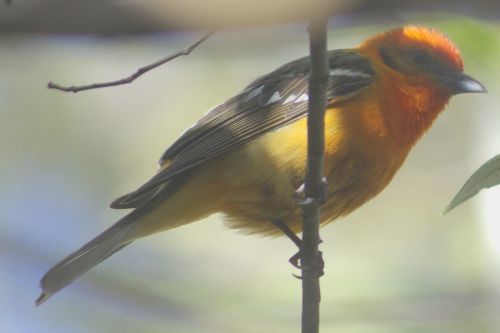
This is a rare bird in the United States. This one spent a couple of weeks hanging out in Madera Canyon. He was last seen in the company of a Hepatic Tanager, if I recall correctly, and later people found hybrids in some of the mountains roundabout.
Bet you didn't know that birds often breed across species. I didn't, either. This leads me to believe that they are really the same species, but because some scientist wanted fame, he described a difference in coloration as a separate species. There could be many reasons why a certain color pattern breeds true, but it seems to me they are really "breeds" in the same sense as a dog might be a breed. Lack of opportunity or other constraints narrow the gene pool until only the one color pattern is seen in a given population. In other words, they lose some genetic information, so you no longer see the varieties. Anyway, that's my theory and I'm stickin' to it!
Lesser Goldfinch on Iceplant - Spinus psaltria
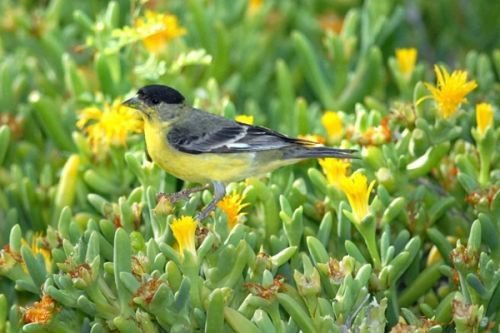
aka Carduelis psaltria.
As their name implies, goldfinches tend to be yellow, though the females of this species are more greenish than gold.
This little guy found a place among some yellow-flowered iceplants. It made for a thrilling picture, for me. Sometimes nature is SO color-coordinated!
Found at Boyce-Thompson Arboretum, Superior, Arizona.
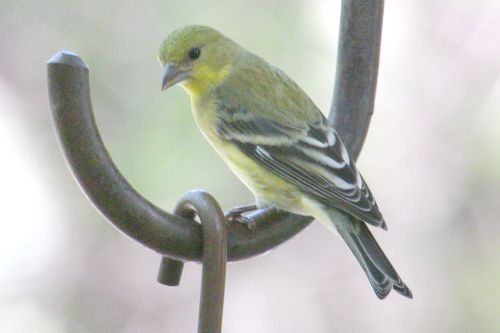
Here's a female, so you can see what I mean.
Found in Madera Canyon.
Wilson's Warbler - Wilsonia pusilla
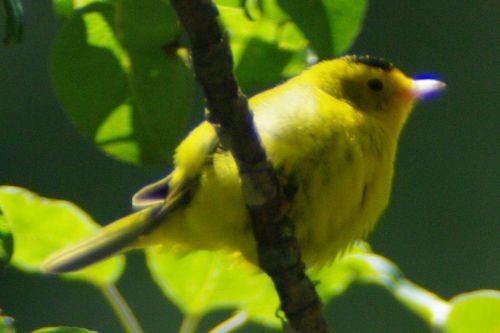
Found in Marshall Gulch, Catalina Mountains. They're not so common. He didn't stay long, either.
Orange-crowned Warbler - Vermivora celata
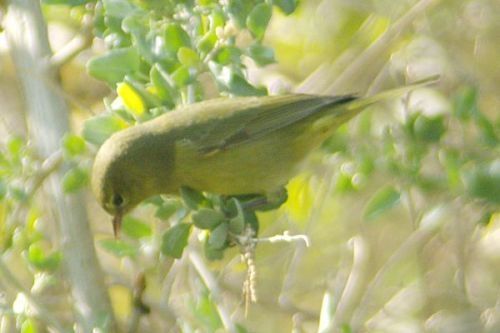
These birds only have the orange crown during breeding season, and they don't breed here. The rest of the time, they look yellowish.
I found this one in Sweetwater Wetlands. They're pretty common there at times.
As the scientific name indicates, they like to eat worms.
Other warblers with yellow that I have seen include Hermit Warbler, Yellow-breasted Chat, and Common Yellowthroat. I hear Common Yellowthroats often. They sound like they're saying "Wichita, wichita". But they rarely show themselves, and I have only one photo in my collection, and it's not good enough to show.
There are other warblers with yellow, but I haven't seen any of them.
Prince's Plume - Stanleya pinnata
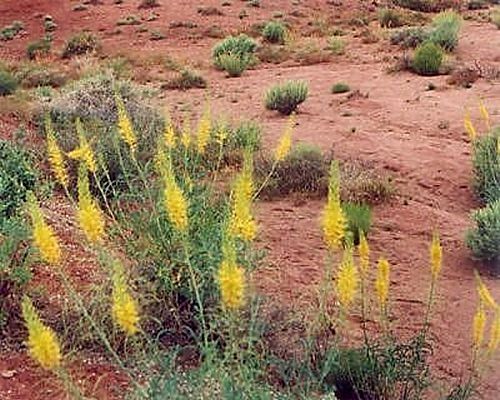
I have never seen bunches or carpets of this flower. It seems to be more of an accent plant, showy as an individual. I found this one in Glen Canyon, SW of Page, Arizona. It is a crop from one of my favorite photographs. You can see the complete photo in my lens, The Beauty of Northern Arizona.
Ruby-crowned Kinglet - Regalus calendula
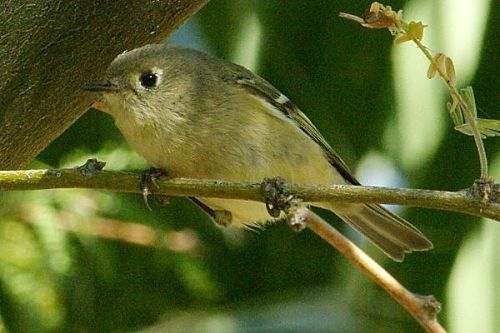
This is another species that only has a ruby crown during breeding season, and he doesn't show it all the time. This one was hanging out where I was looking for the Yellow-throated Warbler, and he was very cooperative. In fact, I saw him or his brother on several occasions.
I'm fudging a little on the yellow. :)
Vermilion Flycatcher - Pyrocephalus rubinus
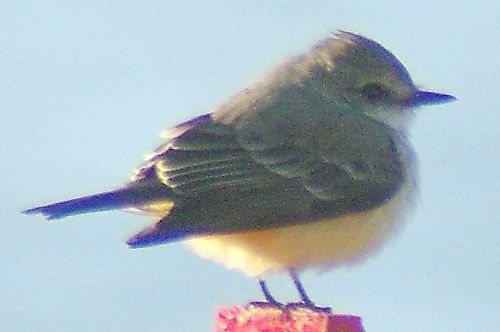
This is a female. She got blessed with the yellow in the family. The males have a brilliant red body and head.
I think I got this one at the Arthur Pack Golf Course.
Cruiser - Vindula arsenae
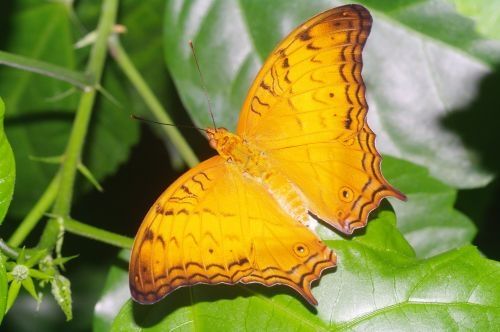
This is another butterfly that lucked out in the beauty department. Those lovely brown markings are on yellow wings. This is a native of India and Australia. I caught him at the Tucson Botanical Gardens. They have a butterfly exhibit through the colder part of the year, October through April. They show off tropical butterflies and plants.
Spider Orchid - Brassia sp.
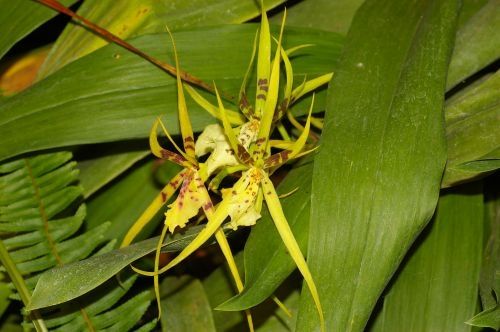
I found this with the butterflies. I am not altogether familiar with orchid species; I'm still learning.
Dancing Lady Orchid - Oncidium sp.
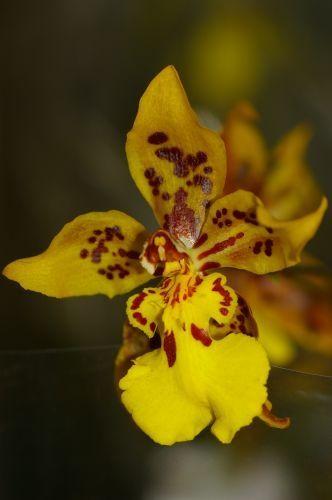
Another one from the Tucson Botanical Gardens.
Many of their orchids were originally purchased from Trader Joe's. They come from Thailand. I don't know about the various orchids I find in the Botanical Gardens. There are supposed to be more over the summer, and I intend to go look.
I also photographed orchids at Trader Joe's until someone jumped all over me for doing it. By that time, I'd gotten pictures of most of them. Hee hee. I respect their right to refuse to let people photograph their displays, but God gave me permission to photograph His flowers. :)
Cymbidium
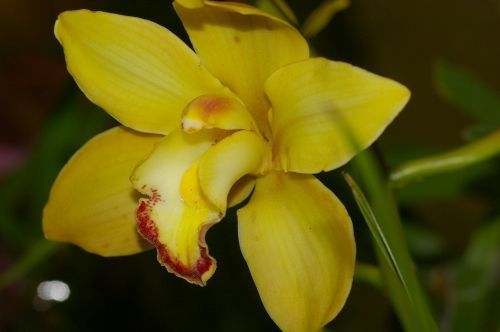
There are many different colors of this orchid, and 52 species altogether.
Since I intend to do a lens on orchids, that's all for now, here.
Scott's Oriole - Icterus parisorum
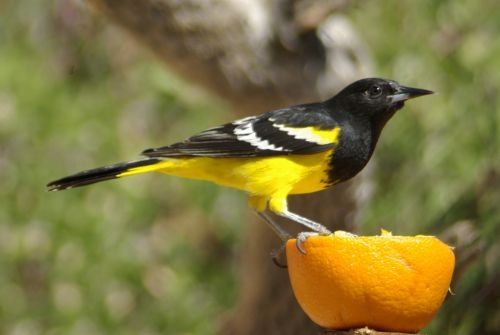
Several orioles have decidedly yellow bodies. This is the male. I found him south of Fort Huachuca, Arizona. As you can see, they like oranges.
Bullock's Oriole - Icterus bullockii
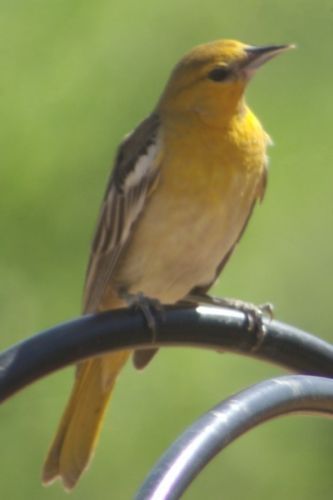
This is the female. Found in Madera Canyon.
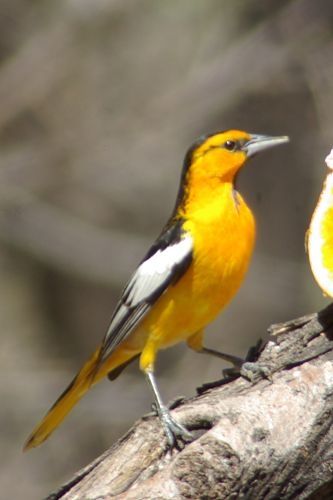
And this male was in a place close by (someone else's yard).
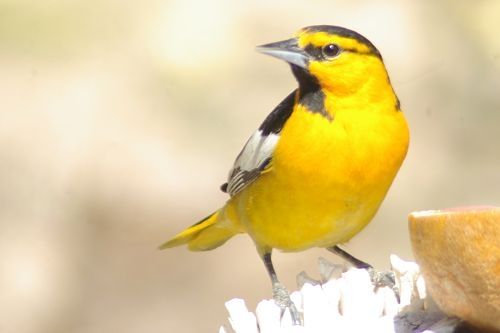
Another male, found with the female.
Butter and Eggs - Linaria vulgaris
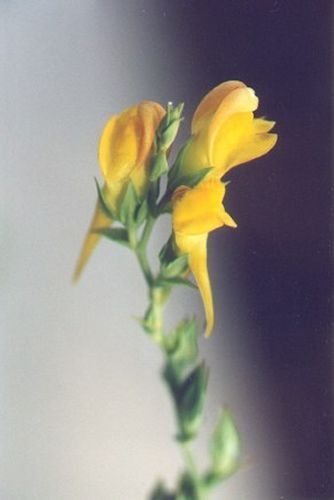
Also known as Toadflax. The word "vulgaris" means "common".
I found these near Sunset Crater in northern Arizona. An ointment from the flower is used medicinally for skin problems.
Says Phoebe - Sayornis saya
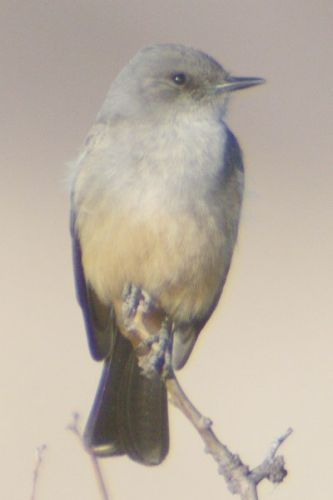
This beautiful little bird was found at Whitewater Draw in southeastern Arizona. These photos are among my all-time favorites, and other people like them, too. This is a crop so you can see the bird well.
I have found these birds also as far north as Gilbert Water Ranch.
Hibiscus
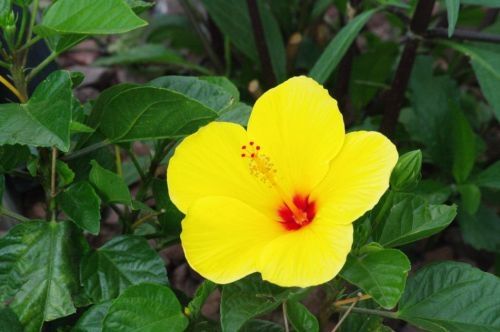
This is not a native species, but several of these varieties of different colors are widely grown in Arizona. I found this one at Tucson Mall.
Hibiscus is used to make a refreshing tea that quenches thirst in summer.
Desert Rosemallow - Hibiscus coulteri
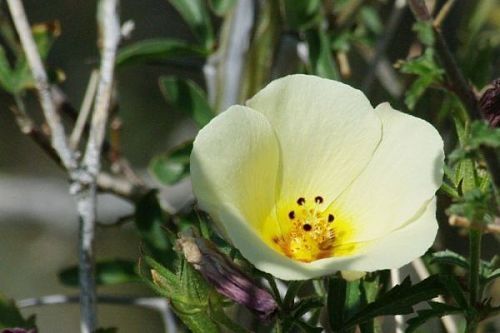
On the other hand, this IS a native species. The flowers are much smaller. I don't know if they make good tea or not. You never see enough of them anywhere, at least I haven't.
This one was on the road between Gates Pass and the Desert Museum.
Where do you like yellow best?
Western Kingbird - Tyrannus verticalis
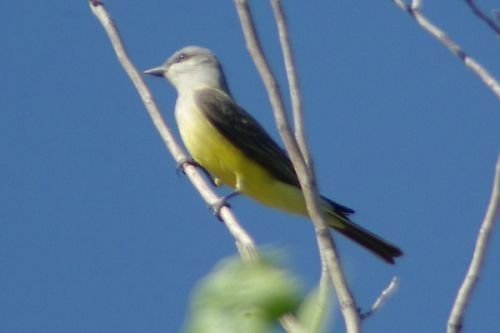
This bird was at Fort Lowell Park in Tucson. They very much like to sit upright, so they are called "verticalis".
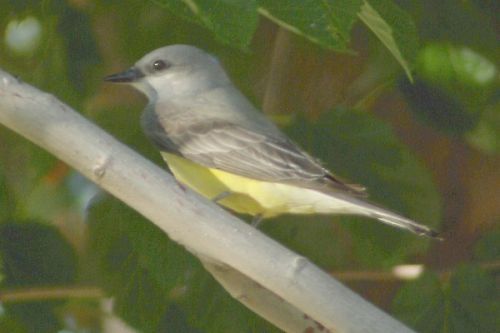
Same bird, in a tree nearby.
Fiddleneck - Amsinckia intermedia
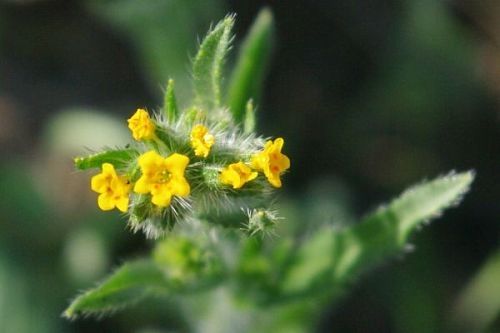
Don't overlook the little things! They can be just as beautiful. The individual flowers are so tiny they're really hard to photograph. After the flowerhead grows for awhile, it resembles the neck of a violin, so it is called Fiddleneck. I found this plant in Catalina State Park. I also have them on my property quite a bit.
Seep Monkeyflower - Mimulus guttatus
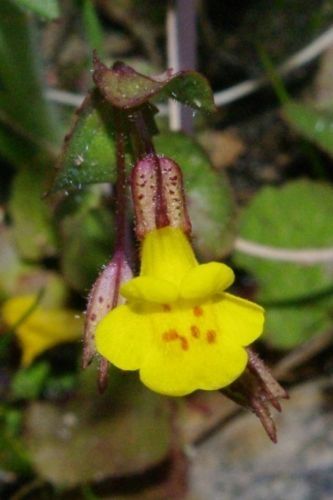
Another little thing. They're small enough that unless there is a bush full of them, you might not even notice them. Found in Molino Canyon, Catalina Mountains.
To get this photo, I hiked down a trail to a pool of water, and then got down on the ground, and got real close.
Western Tanager
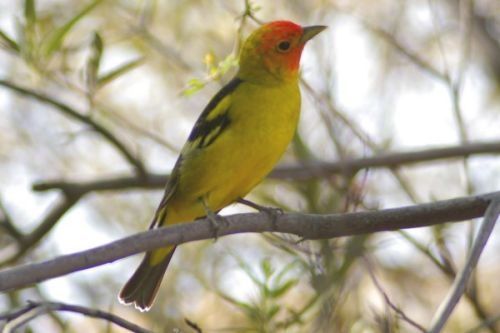
I think this is the only bird in this lens I shot in captivity. He was at the Arizona-Sonora Desert Museum, in their huge aviary. I have seen and photographed them elsewhere as well.
The Desert Museum has a living collection of all sorts of animals and plants.
It is amazing how much more I notice yellow things since writing this lens!
Everywhere I looked, I saw yellow things, and took their pictures. These are my new yellow things.
Lantana - Lantana canescens
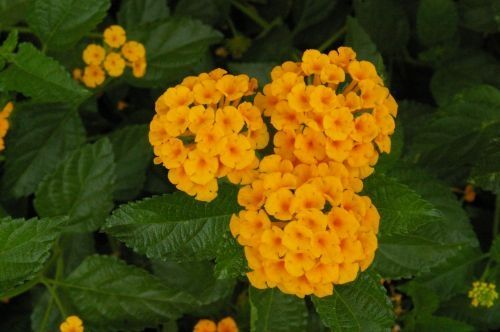
I think...
Found at the restaurant where I ate.
These are not native to the Sonoran desert, but they are widely planted for decoration. They're frost-sensitive and thrive with less water than most flowers. Butterflies like them.
Golden Barrel Cactus - Echinocactus grusonii
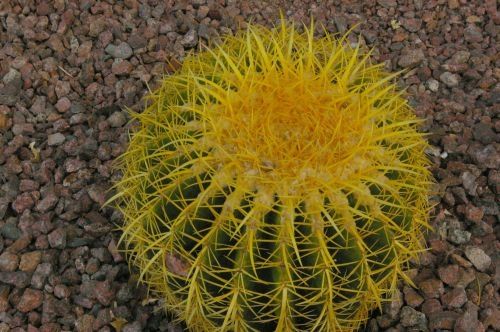
Ever see yellow thorns on a cactus? Well, now you have.
I don't know the full story on this plant, since we had a golden barrel that one of the children planted, and eventually it lost the gold appearance, but I have seen very large specimens that still have the yellow thorns.
Variegated Century Plant - Agave americana var. marginata
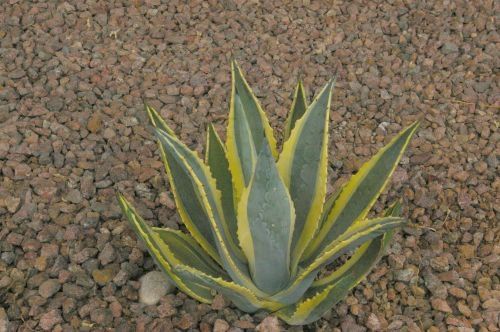
Most agaves just have green leaves. This one has yellow margins for decoration.
Agave Bloom
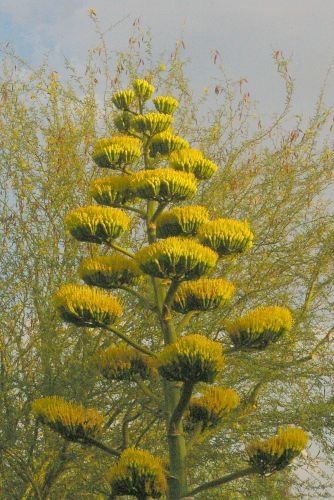
I don't know what species this is, but this is a flower stalk with the THICKEST bloom I have ever seen!
Yellow Sunset
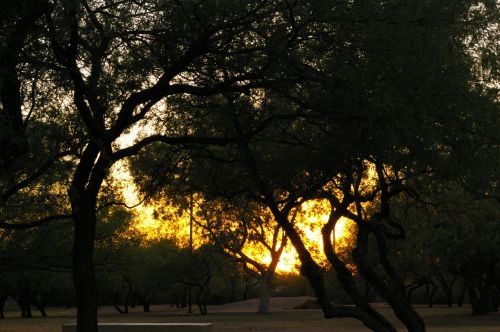
If there aren't any clouds, find some trees.
You are looking across a park.
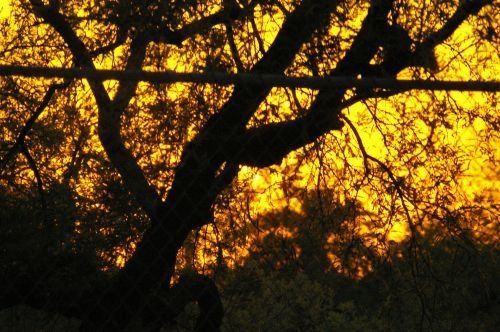
Another view, further down the street.
Quaking Aspens - Populus tremuloides
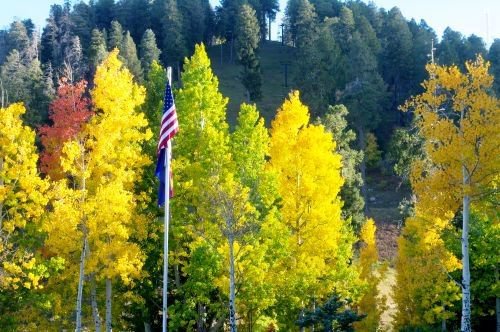
I finish with some yellow trees from last fall. Aspens are noted for their brilliant yellow foliage in fall. And yes, we have fall colors in Arizona. Found in Ski Valley, Mount Lemmon.
Yes, yellow living things are wonderful. I thank God for all the beautiful yellow things I have found in my years of travel and photography.
Purple Star and LoTD
Thank you to Squidoo for the Purple Star and the Lens of the Day! It was such a wonderful surprise!
And thank you to all of you for your amazing and wonderful comments! As time permits, I will visit each of you.
Good books on nature on Amazon
Learn More about Our Wild Things on Amazon
I own and use each of these books heavily.
The Sibley Guide to Birds
by David Allen Sibley
Covers all of the United States, but about half of these species are found in southern Arizona anyway. Please note: there is a second edition. But the color printing on it is atrocious. It will give you up to date information, but for illustrations of the birds that are reasonably accurate, also buy the first edition.
Mountain Wildflowers of Southern Arizona: A Field Guide to the Santa Catalina Mountains and Other Nearby Ranges
by Frank S. Rose
Very comprehensive guide to wildflowers from the base of the Catalina Mountains all the way to the top
Butterflies of Arizona: A Photographic Guide
by Hank Brodkin, Priscilla Brodkin, Bob Stewart
Hundreds of species; quite complete.
Dragonflies and Damselflies of the West (Princeton Field Guides)
by Dennis Paulson
Hundreds of species.
Birds of Southeastern Arizona
by Richard Cachor Taylor
With actual photographs, it makes bird identification easy. Compact, will fit into a backpack easily.

